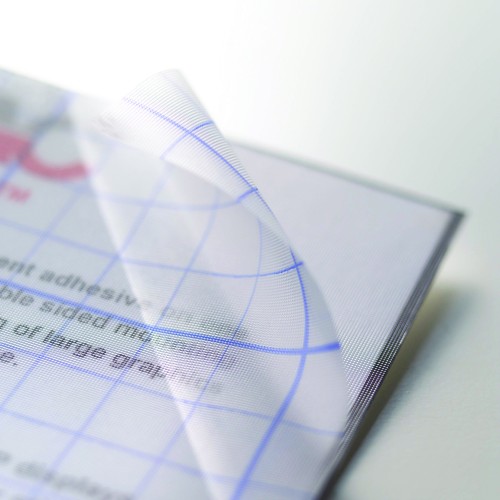
It has become more common for sign shops to order media created specifically for certain applications, such as window graphics.
Ease of installation
Not only are wide-format media being formulated more specifically for their intended uses, but the process of applying them has also become easier.
Professionally trained graphics installers are still essential to achieving successful results on challenging and demanding projects like vehicle wraps, but other types of installations have become more forgiving for the relatively untrained. In addition to repositionable adhesives that allow highly conformable cast vinyl media to be slid along an installation surface, these films’ ‘air egress’ release liners are becoming more common with thicker calendered vinyl, too, making it easier to install graphics without wrinkles or bubbles.
Low-tack removable and repositionable ‘microsphere’ adhesives are also becoming more relevant with the rise of custom-printed wall decals and appliqués. Today’s formulations can be better-relied upon for stability and consistency across multiple uses.
Application-friendly self-adhesive media are especially seeing growth in the retail sector, where untrained staff may be called upon to revamp entire storefronts. Calendered vinyl that is 0.15 mm (6 mil) and thicker and polyester-based woven media, which are less conformable and semi-rigid in nature, allow more consistent repositionability, reduce the likelihood of the material folding onto itself during installation, hide imperfections in the surfaces to which they are applied and allow easier removal once the graphics are no longer needed.
Alternative materials
There is also a marked increase in demand for non-PVC-based pressure-sensitive wide-format media. Although cast vinyl has dominated for years as the preferred choice for vehicle wraps, for example, polyurethane (PU) films are now catching the industry’s attention. They are highly conformable, exceptionally durable and ultraviolet-resistant (UV-resistant).
Very thin white PU films and clear PU overlaminates have become very practical as bundled products for vehicle graphics. Polyolefin films, which are generally blended polypropylene (PP) and polyethylene (PE) films, are also becoming viable media choices.
One reason is the regulatory push toward non-PVC options and phthalate-free vinyl films. While phthalate plasticizers are still commonly found in most vinyl films, as they are added to make the films softer and more conformable, legislation in some parts of the world—including several states in the U.S. and countries in Europe—is starting to more strictly regulate their use and, in some cases, ban them outright, due to concerns about their environmental and health effects.
The rise of polyester-based self-adhesive wide-format media and other ‘green’ non-PVC specialty films is also seen in the growing demand for optically clear films that are applied to glass for decorative and architectural graphics.
Creative progress
This is an exciting time for wide-format printing and signmaking with self-adhesive media, with a wider array of products readily available and delivering exceptional value. With rampant creativity and progress in formulations, the longevity of the media remains undeniable.
Never before have substrate manufacturers offered so many options, with such a degree of customization. Making informed selections about which media to use will help mitigate problems and build stronger relationships with customers.
Paul Filippelli is national sales manager for Drytac Canada, based in Concord, Ont., which provides pressure-sensitive adhesive-coated products, wide-format inkjet printing media, laminating films, banner stands, liquid coatings and lamination equipment. For more information, visit www.drytac.ca.






